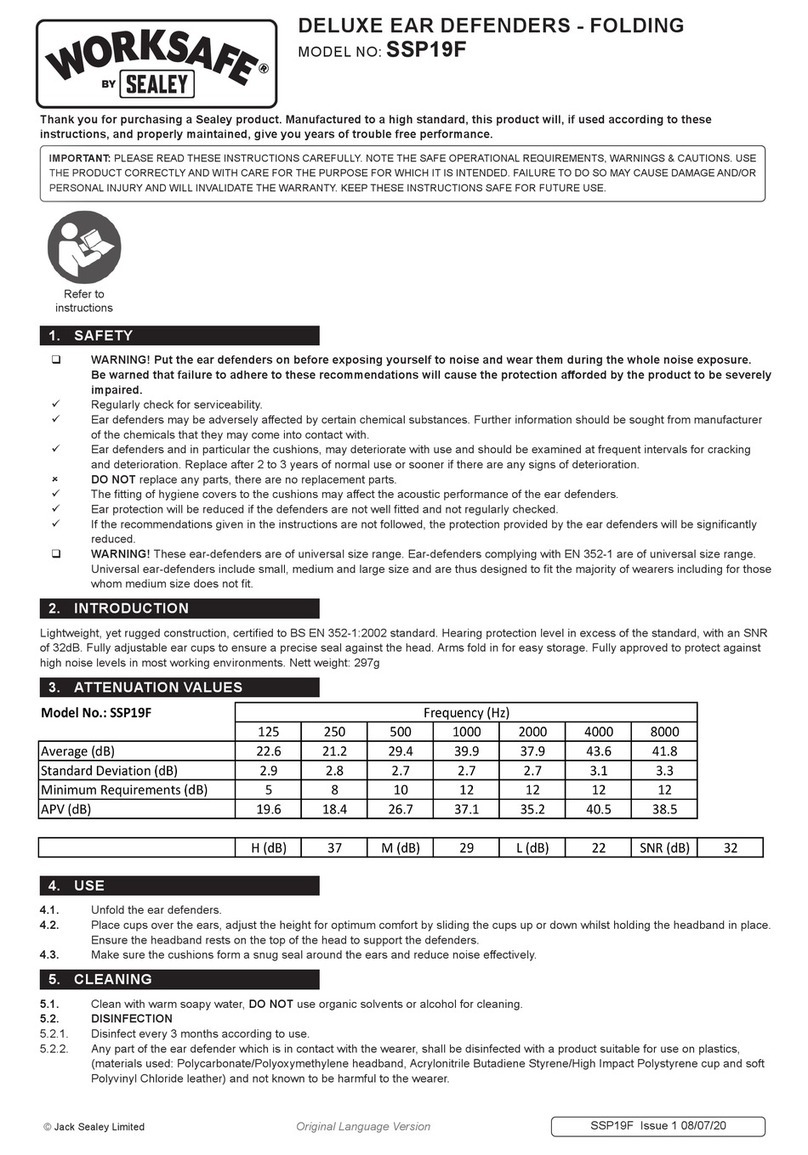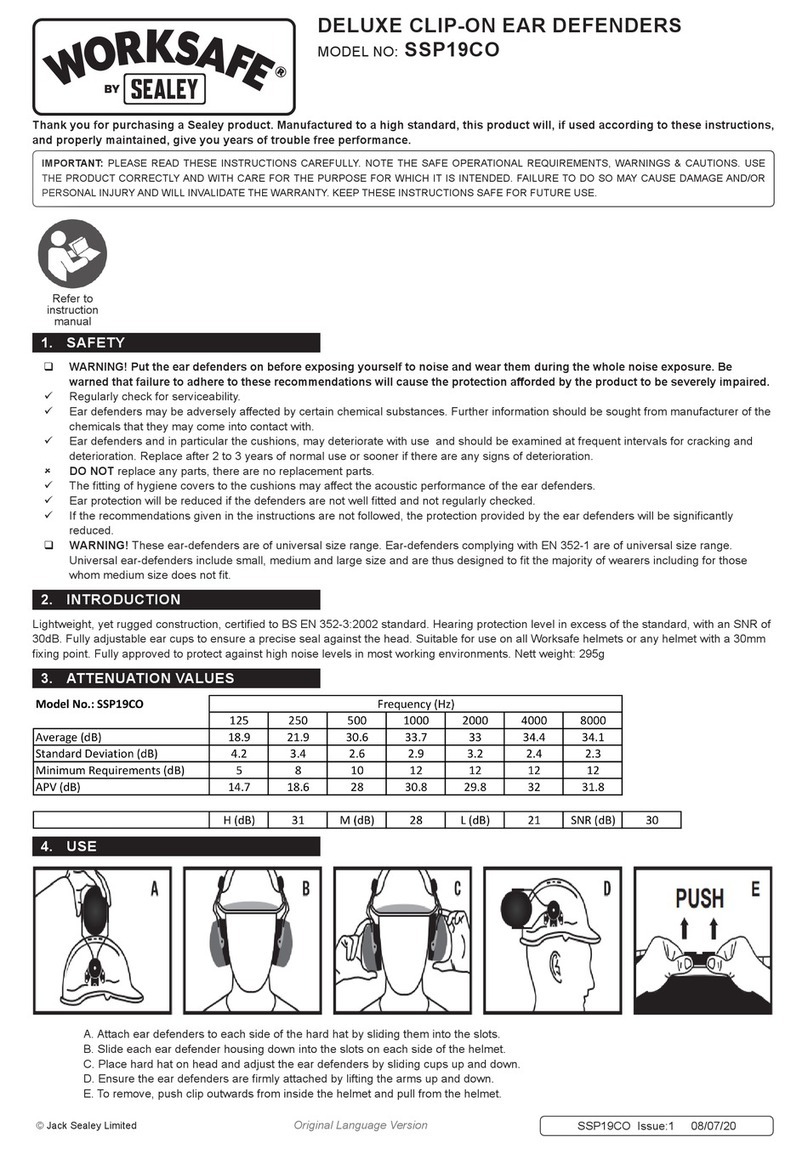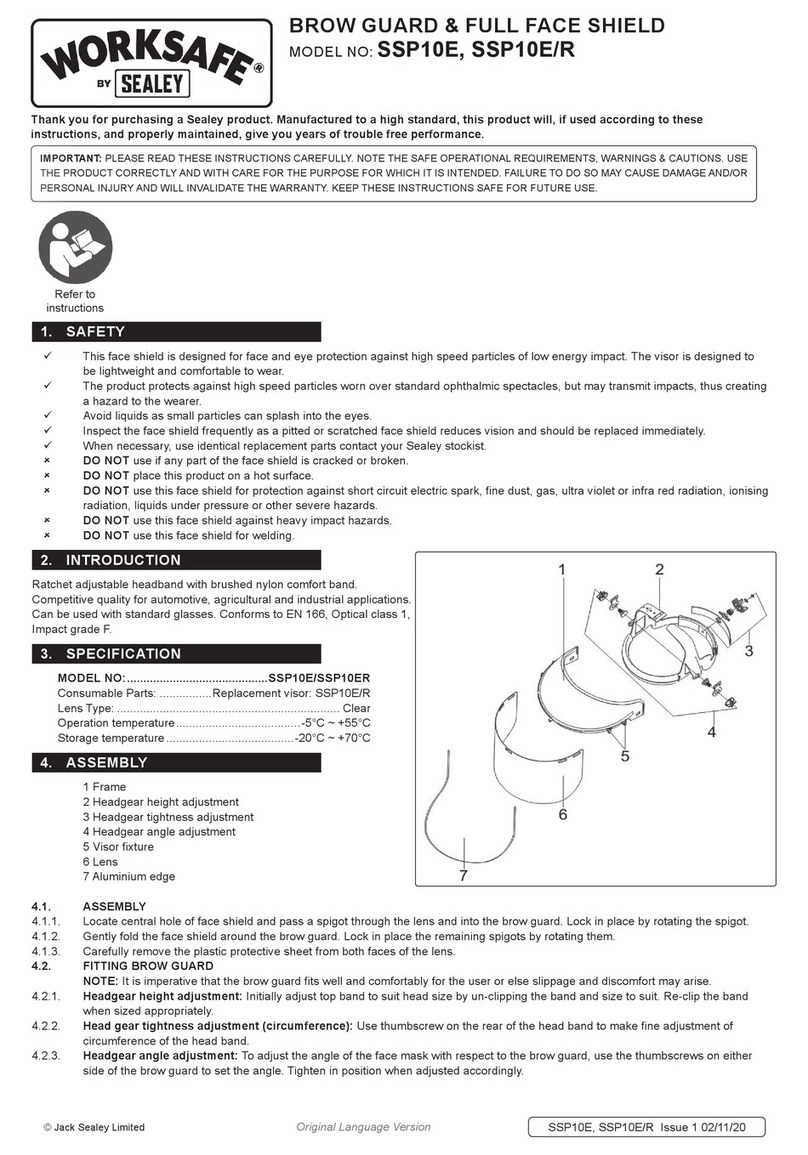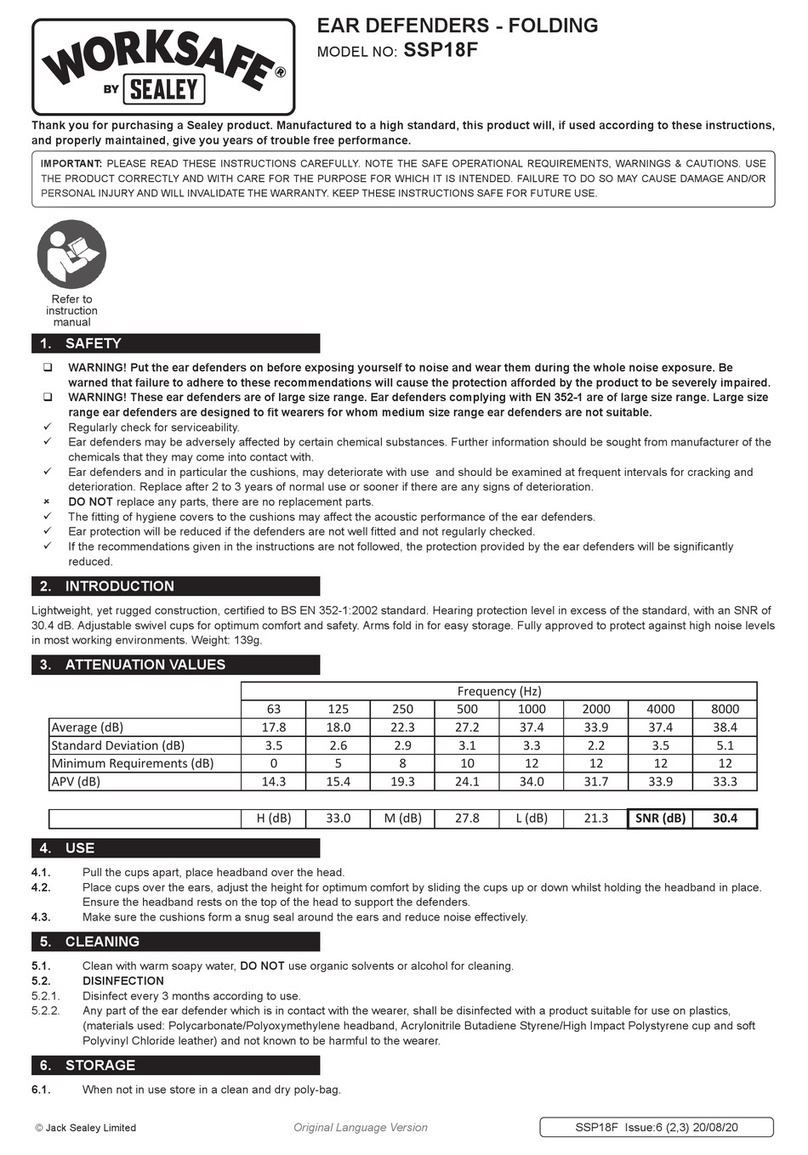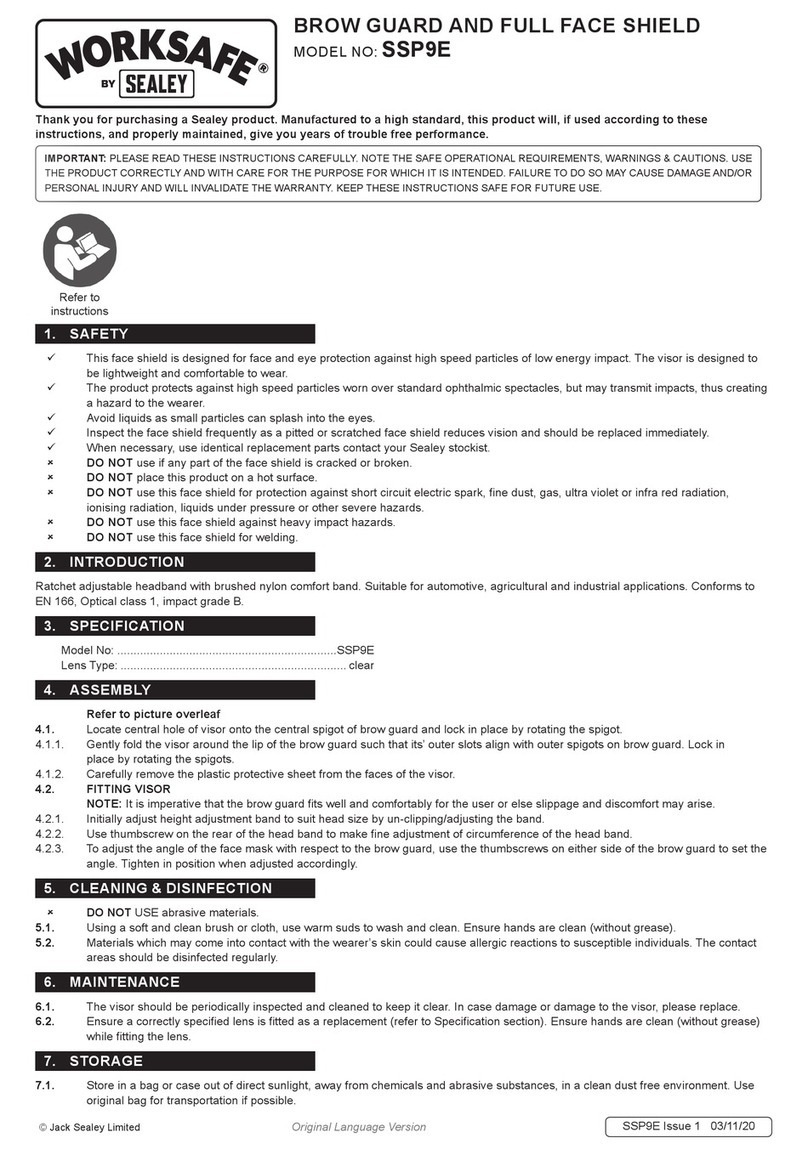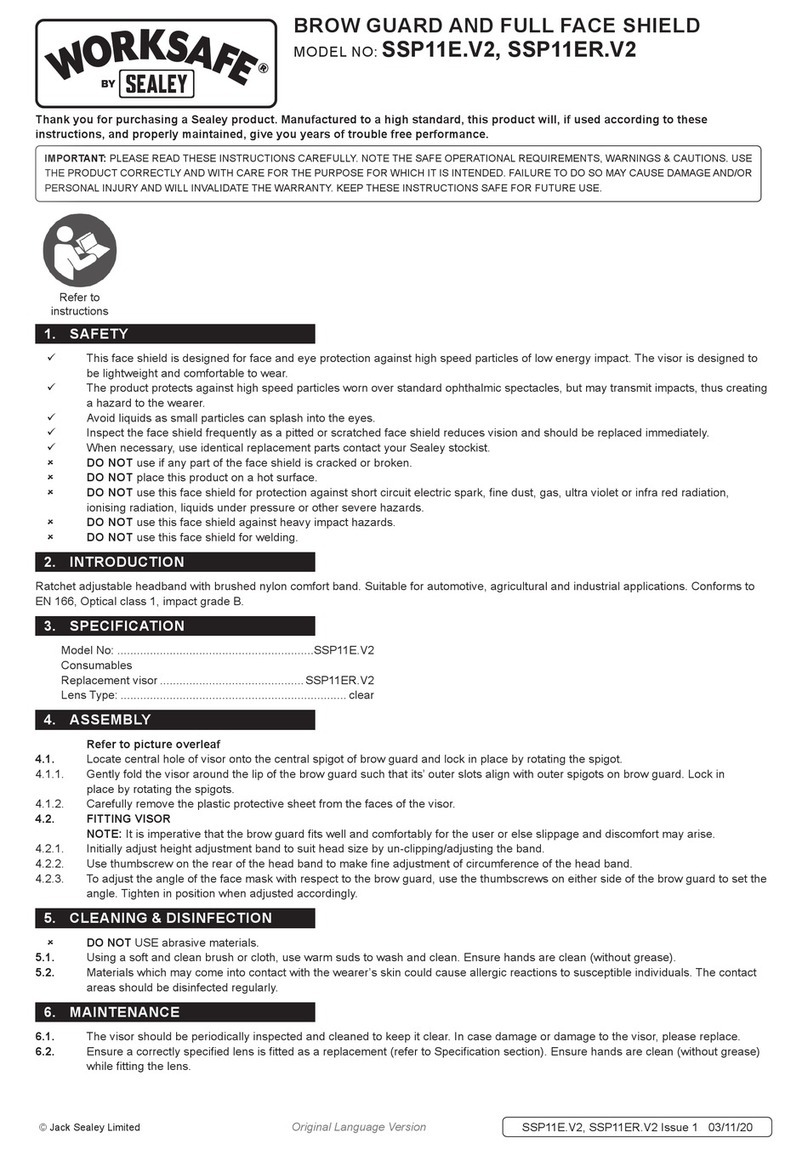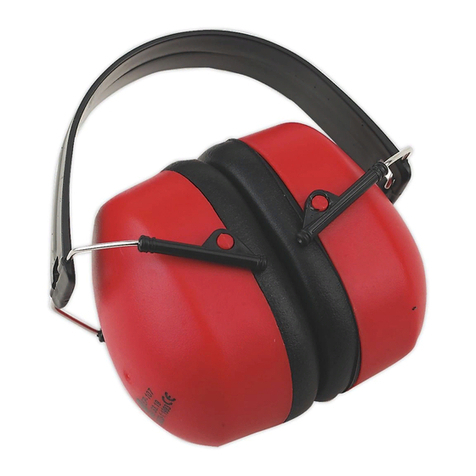
1. SAFETY INSTRUCTIONS
IMPORTANT: PLEASE READ THESE INSTRUCTIONS CAREFULLY. NOTE THE SAFE OPERATIONAL REQUIREMENTS, WARNINGS & CAUTIONS.
USE THE PRODUCT CORRECTLY AND WITH CARE FOR THE PURPOSE FOR WHICH IT IS INTENDED. FAILURE TO DO SO MAY CAUSE
DAMAGE AND/OR PERSONAL INJURY AND WILL INVALIDATE THE WARRANTY. PLEASE KEEP INSTRUCTIONS SAFE FOR FUTURE USE.
Thank you for purchasing a Sealey product. Manufactured to a high standard this product will, if used according to these instructions
and properly maintained, give you years of trouble free performance.
INSTRUCTIONS FOR:
SHOT BLASTING CABINET
MODEL No: SB951.V4
1.2GENERAL SAFETY
WARNING! Ensure Health & Safety, government and local authority regulations relating to the the use of shot blasting are adhered to when
using this equipment. Familiarise yourself with the applications, limitations and potential hazards peculiar to the cabinet.
WARNING!Disconnect the cabinet from the mains power and the air supply before attempting to change accessories or carry out any
servicing or maintenance.
Maintain the cabinet in good condition Replace or repair damaged parts. Use genuine parts only. Unauthorised parts may be dangerous
and will invalidate the warranty.
Locate cabinet in a suitable work area and keep area clean, tidy and free from unrelated materials. Ensure there is adequate lighting.
Use only dry abrasives such as proprietary brands of glass beads, silicon carbide, aluminium oxide and silica sand. We recommend Sealey
item B5KG. Never use fluids or mix fluids with another media in the unit.
WARNING! Always wear approved eye or face and ear protection when operating the cabinet.
Keep the unit lid closed and secured when in use.
WARNING! Ensure correct air pressure is maintained and not exceeded. (Max 90psi).
Always keep the blast nozzle directed at the workpiece. Never use outside the unit and always use with the lid closed.
Regularly check that the exhaust vent at the back of the cabinet is clear and not blocked and that there is space between it and any wall.
Maintain correct balance and footing. Ensure the floor is clean and free from blasting media spillage. Wear non-slip shoes.
Remove ill fitting clothing. Remove ties, watches, rings, and other loose jewellery and contain and/or tie back long hair.
Keep children and non-essential persons away from the work area.
DO NOT use the cabinet for a task it is not designed to perform.
DO NOT operate the cabinet if any parts are damaged or missing as this may cause failure and/or personal injury.
DO NOT operate the cabinet with the lid open.
DO NOT stand on the cabinet.
DO NOT get the cabinet wet or use in damp or wet locations or areas where there is condensation.
DO NOT operate the cabinet when you are tired or under the influence of alcohol, drugs or intoxicating medication.
DO NOT leave the cabinet operating unattended.
When not in use disconnect from the electrical mains and the air supply.
NOTE! We strongly recommend that a suitable dust extraction system is used with this unit.
If dust extraction is not used, media may be forced out of the joints as pressure builds up. You can alleviate this to some extent
by removing the white blanking plug (Fig.1) situated on the upper left corner at the rear of the tank when viewed from the front.
This however will not substitute a suitable dust extraction system.
1.1. ELECTRICAL SAFETY
REGARDING DIRECT MAINS POWER USE WITH THE TRANSFORMER PLUG.
WARNING! It is the user’s responsibility to read, understand and comply with the following electrical instructions:
You must ensure the risk of electric shock is minimised by the installation of appropriate safety devices. An RCCB (Residual Current Circuit
Breaker) should be incorporated in the main distribution board. We also recommend that an RCD (Residual Current Device) is used with all
electrical products, particularly portable equipment which is plugged into an electrical supply not protected by an RCCB.
You must also read and understand the following instructions concerning electrical safety.
1.1.1. The Electricity At Work Act 1989 requires all portable electrical appliances, if used on business premises, to be tested by
a qualified electrician, using a Portable Appliance Tester (PAT), at least once a year.
1.1.2. The Health & Safety at Work Act 1974 makes owners of electrical appliances responsible for the safe condition of the appliance
and the safety of the appliance operator. If in any doubt about electrical safety, contact a qualified electrician.
1.1.3. You must ensure that you:
Inspect the transformer plug, cable, and plug for wear and damage to ensure items are safe before connecting to the mains power supply. If
worn or damaged DO NOT use and immediately replace, or contact a qualified electrician.
Check cables are always protected against short circuit and overload.
Important: Check that the voltage marked on the transformer plug is the same as the power supply to be used.
Uncoil the lead from the transformer before use.
DO NOT attempt to pull the transformer plug from the mains socket by the lead.
DO NOT use any other type of transformer with the cabinet.
DO NOT try to open or dis-assemble the transformer plug or charging base.
DO NOT use the transformer plug to power any other electrical item.
DO NOT get the transformer wet, or use in wet, damp conditions (for indoor use only).
WARNING!NEVER substitute a standard 13 amp 3 pin plug, or any other type of plug, for the transformer plug .
Original Language Version SB951.V4 Issue: 2 - 13/11/09
